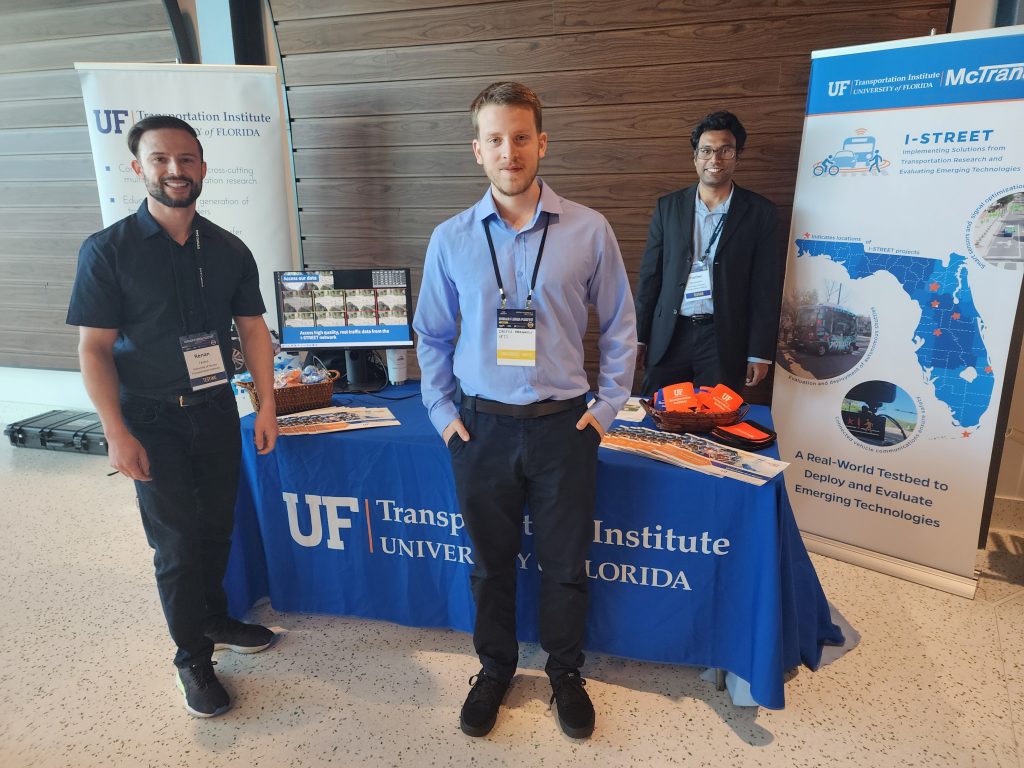
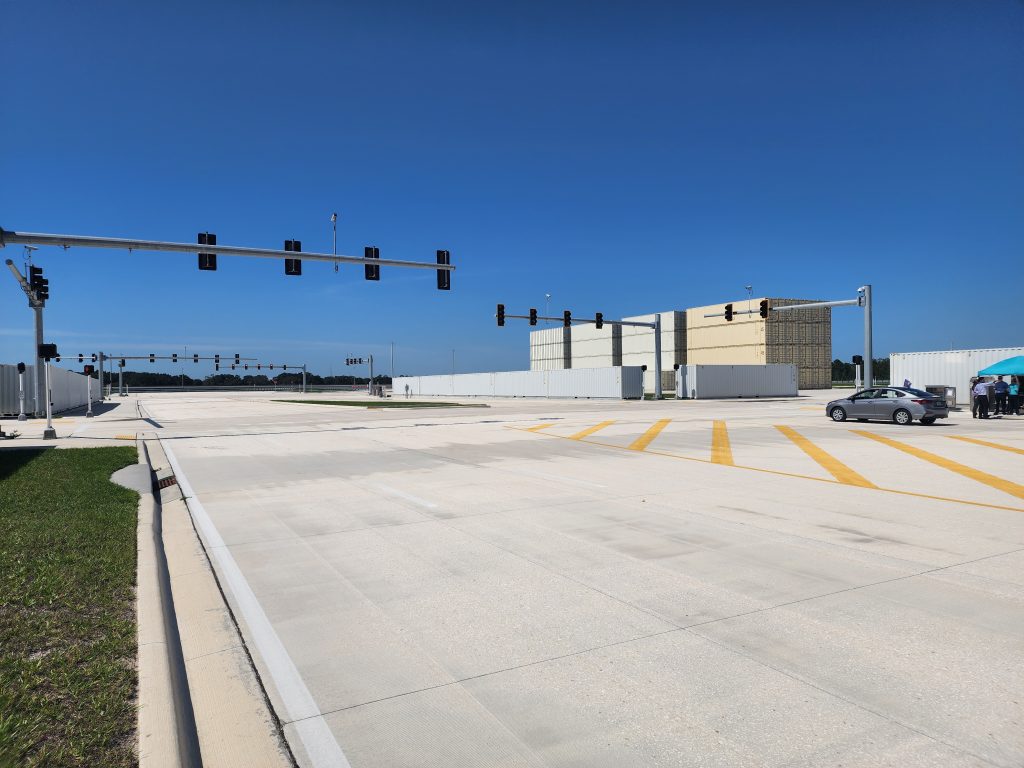
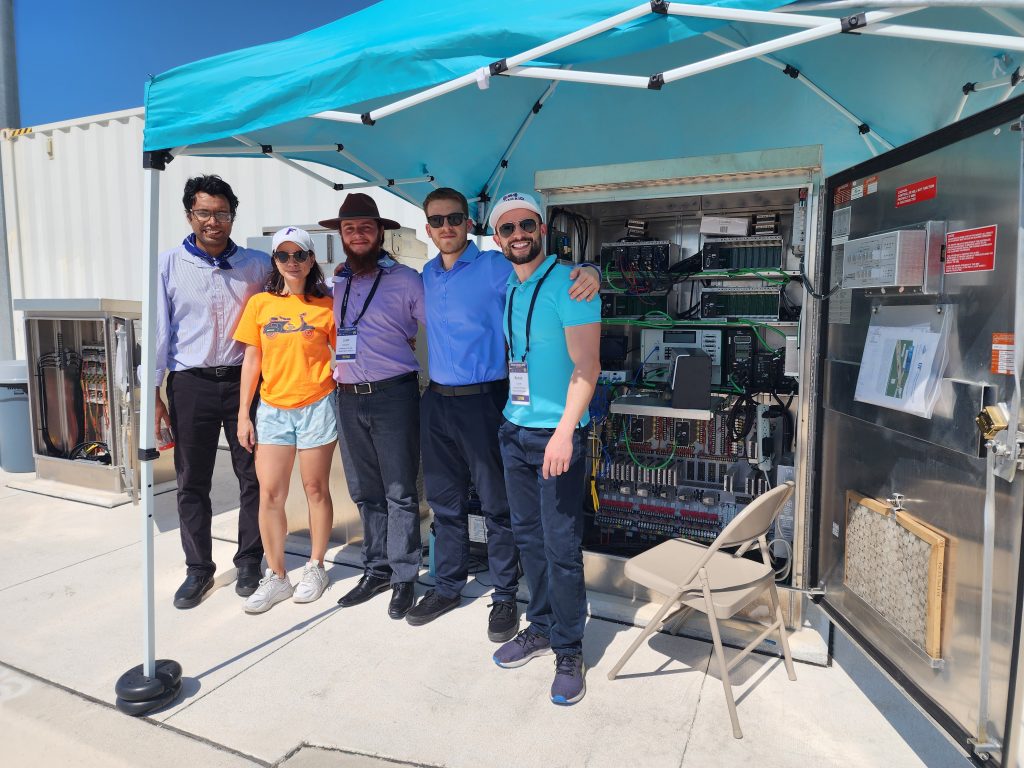
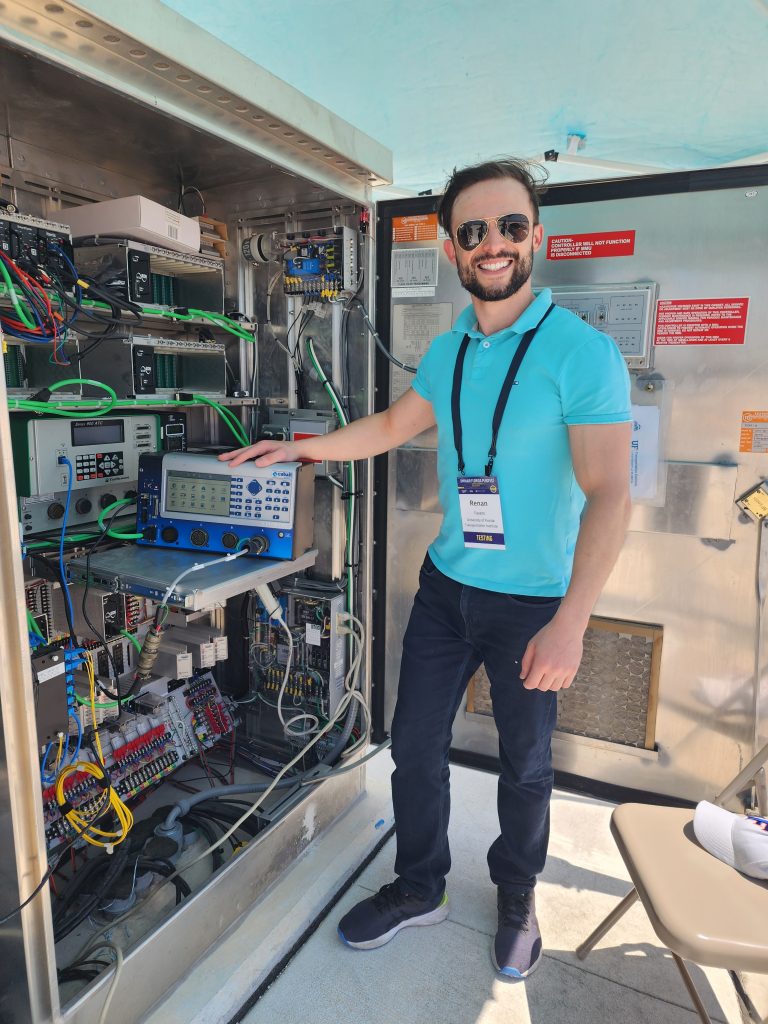
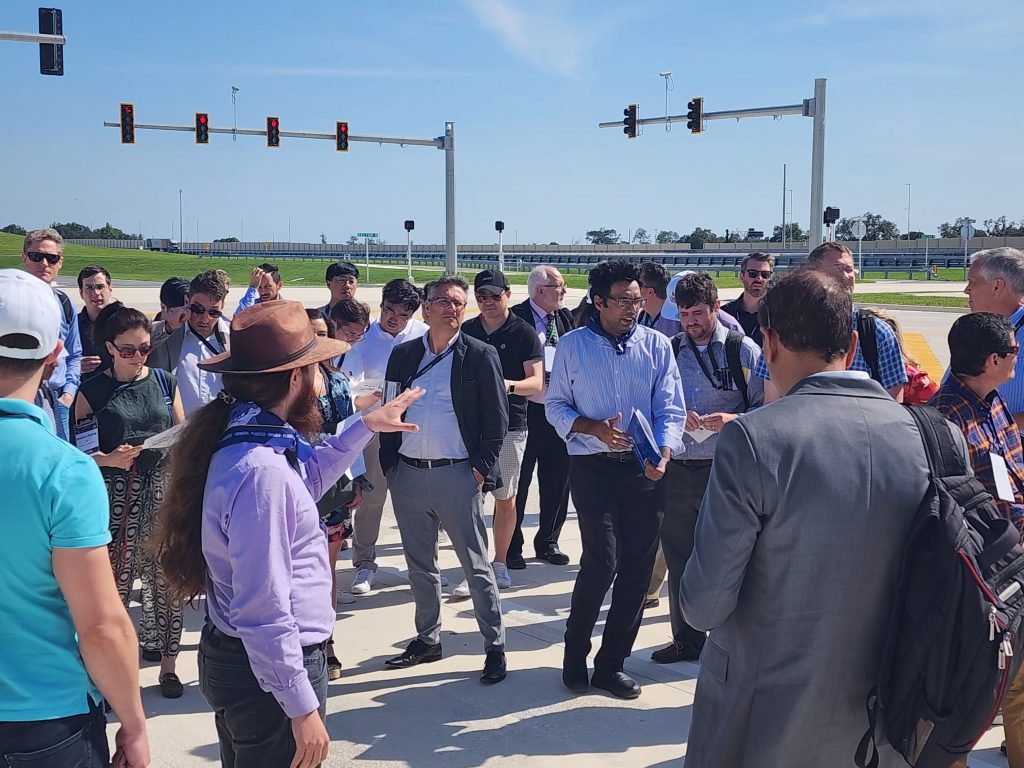
Researchers from the University of Florida Transportation Institute’s (UFTI) I-STREET Living Lab traveled in May 2023 to the SunTrax Test Facility in Auburndale, Florida, to test an algorithm they created that optimizes and operates traffic signals, thus improving safety and traffic performance at intersections. The key component of this new algorithm is the use of novel vehicle detection and communication technology.
Testing was conducted during OmniAir’s Plugfest at SunTrax, where leading transportation technology companies/providers gathered for a week-long event. Different applications of connected vehicle technology were tested based on cellular-vehicle-to-everything (CV2X), which is a connectivity platform that offers low-latency communication between vehicles and other vehicles (V2V), roadside infrastructure (V2I), pedestrians (V2P) and even bicyclists. This type of technology has huge impacts on road safety potentially preventing vehicle crashes.
“At Plugfest 2023, industry leaders in CV2X development were focused on testing cross-compatibility of their communication equipment between different manufacturers,” said Dr. Luan Carvalho, a recent graduate of the UFTI’s transportation program in Herbert Werthheim College of Engineering. “The UFTI research team wanted to go one step further, showing how the CV2X technology could be leveraged to change how we design signalized intersections both in terms of infrastructure and software.”
CV2X and novel detection systems allow researchers to reduce the time that vehicles spend at traffic signals by fine-tuning the green time to serve vehicle and pedestrian demand. So, what does this mean? With this new technology, as your vehicle, equipped with a special radio, approaches the traffic light at an intersection, your car will “talk” with the traffic signal controller, requesting a green light. Vehicles unequipped with the radio are detected through different sensing equipment (i.e., cameras, radar, Lidar) mounted on the traffic lights for a similar effect. Information from the vehicle is passed on to the optimizing algorithm which will automatically change the lights for you.
“Drivers whose vehicles possess CV2X capabilities receive speed recommendations and signal lights information so they can avoid unnecessary stops under the red light, reducing emissions and lost time accelerating/slowing down,” Carvalho said.
Additional team members who traveled to Plugfest included, I-STREET Manager Dr. Pruthvi Manjunatha, who coordinated UFTI activities at Plugfest; recent graduate Dr. Agustin Guerra; and doctorate students Renan Favero, Victoria Zorbas and Orestis Karamouzis who were at the test track running the real-time intersection optimizer (RIO) algorithm demo for attendees. Ines Aviles-Spadoni, the UFTI’s research coordinator, attended the event as well.
“It was a great event for the UF team to showcase our research products and meet companies to explore collaborations,” Dr. Manjunatha said. “It was a great learning experience being the co-hosts, organizing and bringing this international event to Florida.”
At the demo station, Zorbas sat behind the wheel of a car retrofitted with an onboard unit radio, and Dr. Carvalho sat behind a monitor next to the traffic signal controller making sure the algorithm and her trajectory were matching up and showing visibly on the screen. A portable tent protected the students and computers from the blinding glare of the sun shining down on the test track’s white concrete.
Victoria took on passengers to show how the lights changed to green when her vehicle approached, allowing her to seamlessly drive through the intersection.
“It was fascinating to explain how the system works and see the reactions of people as they approached intersections and were given green lights,” she said. “Our next step is to update our equipment to work with V2X technology, which will further improve the efficiency and safety of our system. We are also continuing to work on improving our application to ensure that it is as safe and user-friendly as possible.”
There’s a big focus on CV2X technology. In April 2023, the Federal Communications Commission (FCC) approved waivers that now allow this type of technology to be tested by automotive equipment manufacturers, device manufacturers, and state departments of transportation. The U.S. Department of Transportation is on board with this type of connected technology and is currently developing a plan for nationwide interoperable connectivity deployments.
Plugfest attendees represented professionals from the private sector such as device manufacturers, test equipment providers, and test laboratories. Public sector attendees included those federal and state entities, including academic institutions such as the University of Florida.
The UFTI was one of the partners of OmniAir’s Plugfest this year along with the Florida Department of Transportation and Florida’s Turnpike Enterprise.
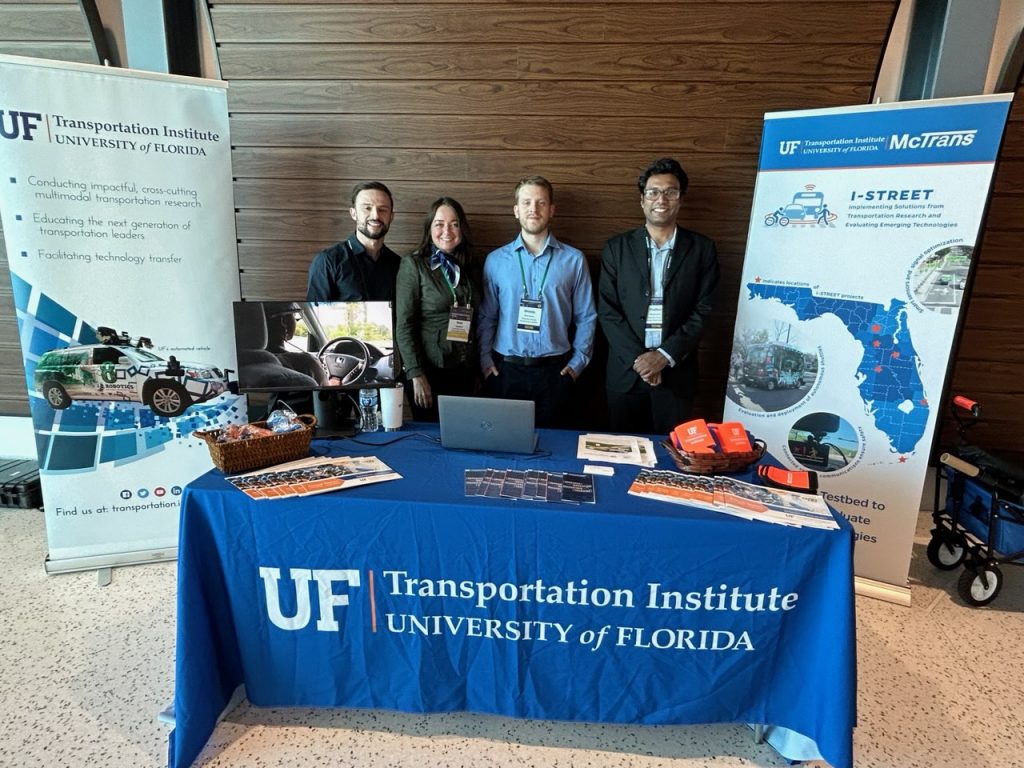
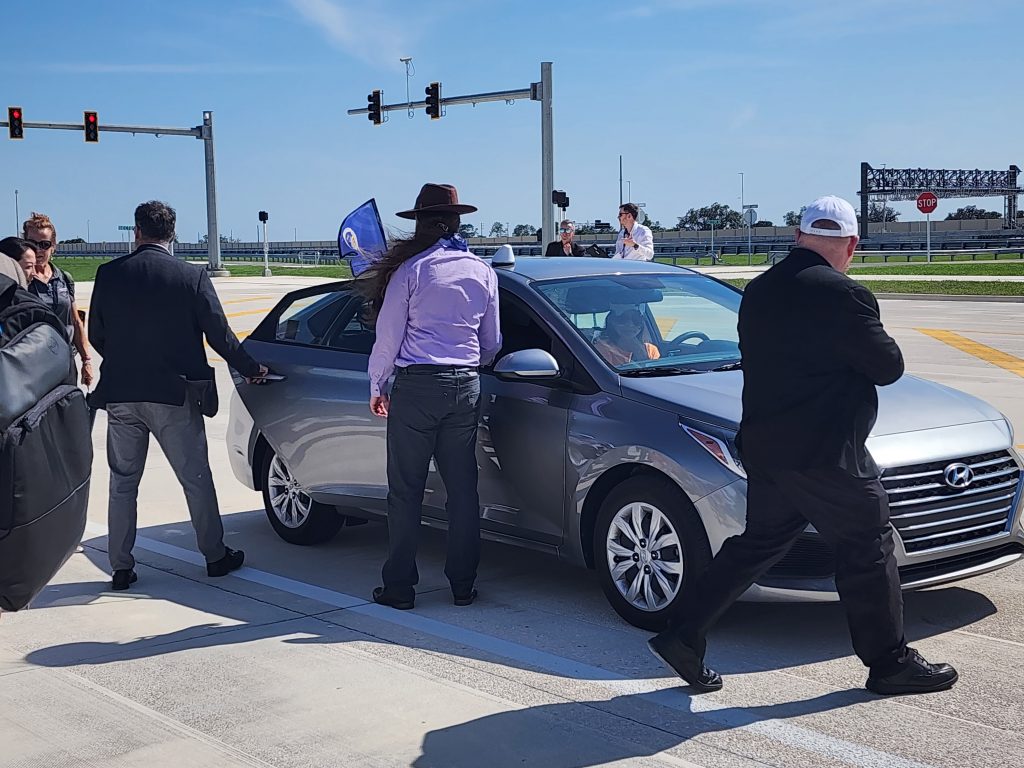
By: Ines Aviles-Spadoni
Coordinator, Research Programs/Services
University of Florida Transportation Institute (UFTI)